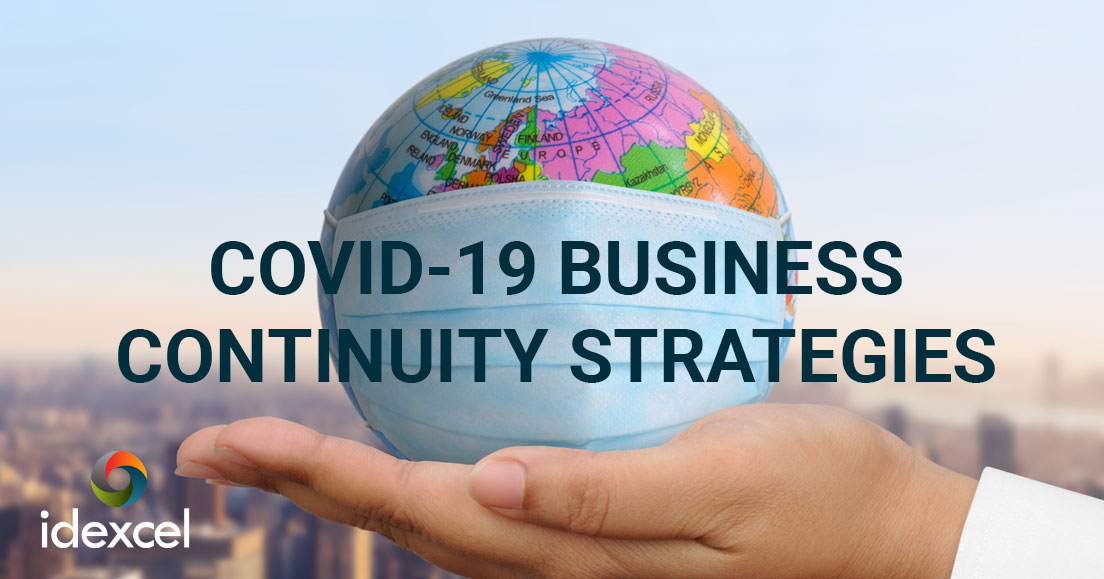
The health crisis of COVID-19 impacted businesses, people, and communities in numerous ways, causing us to change our strategies and the way we live going forward. This means that businesses are adapting to an incredibly new business landscape that’s changing the way we will work for the foreseeable future. Organizations are challenged with reinventing strategies, enabling virtual teams with remote workspaces, and exploring what’s possible for creating new innovations. Here are some key strategies to implement to accelerate business continuity and transition to a new working world:
Establish Your Team Leaders
The greatest asset any organization has are its people. Choose the team members with proven reliability, organization skills, and strong leadership qualities, especially under pressure. Situations like COVID-19 can prove to be stressful, so it is wise to choose to your Business Continuity team with these things in mind. Some roles you might consider designating specifically for Business Continuity purposes are Executive Business Continuity Manager (overall Team Lead), Communication Lead, IT Lead, Human Resources, Facilities/Maintenance, and Operations/Logistics Lead. These roles can depend on your specific business needs and internal departmental breakdown. Once you’ve decided your key players, it’s time to evaluate the primary business processes that need to continue in case of business disruption.
Document & Identify Critical Processes
From internal human resources processes like payroll processing, retirement plan administration, healthcare benefits to business operations such as supply chain management, customer support, operational processes, each of these requires certain access to various technology and secure applications. It is important to know if these processes will still be able to be performed with the current systems architectures and IT tools in place. That leads us into the next strategy, where we connect each process with existing resources in place to determine if the business continuity plan being developed will need specific changes, updates, or additions.
Identify Key Technology and Tools
Performing a proper assessment of current tools and technologies to validate capability will reveal where there might be gaps that need to be filled. One key question to consider is “Will these tools and technologies we currently have in place work in the case of a future change in working environment?” The answer to this will help identify what potential technologies or tools that might be needed in order to continue seamlessly operating with minimal disruption. Need help strategizing? Learn more about how to leverage cloud technology to improve business operations and increase performance efficiencies here.
Consider Contingency Technology and Tools
Is your system architecture set up for a new working structure for virtual teams? Is your cloud strategy crystal clear and strong enough to handle changing needs in terms of scalability and operations? Is it ready in case of another change in the working environment or future disaster? For example, it might be necessary to set up virtual workspace situations for employees. As a preferred AWS partner, Idexcel can help implement AWS Workspaces solutions in your organization – enabling business continuity by providing users and partners with a highly secure, virtual Microsoft Windows or Linux desktop. This setup grants your team access to the documents, applications, and resources they need, anywhere, anytime, from any supported device. Learn more about how we can help do that here.
Build A Customer Communication Plan
Communication with your staff, clients, and partners is perhaps the most important element of these strategies. The more they hear from you, the better off you will be with establishing trust and reliability. When communicating, be sure to follow these 3 guidelines:
1. Timing is everything. Responding quickly is key to establishing trust, visibility, and proactivity. It’s critical to be timely with messaging and depending on that communication sent, to give proper response and planning time to the recipient.
2. Be clear, concise, authentic, and provide value. Keep your communications simple and to the point. Create messaging that provides value, help, and support during any business changes or possible disruptions. Another key tip: keep it positive and avoid the use of negative words to evoke a more positive feeling and reaction to the communication. The more authentic and personable the messaging, the more likely you are to receive a positive response and invoke a sense of comfortability.
3. Leverage all communication channels. Social Media is a great way to keep in touch with your audience. Employees, clients, and partners alike are all very active, especially on LinkedIn, given it’s a key point of communication and connection digitally among professionals. Keep up with email communication with your teams internally as well, checking in often and also checking in how it may have impacted them.
Set Your Organization Up for Innovation
With a Business Continuity plan in place and the team assembled, now might be the time to consider strategically planning for innovative solutions. Specific technologies can be implemented to ensure accelerated business continuity measures are in place to better set your business and teams up for success.
For example, many organizations are adopting Machine Learning solutions with RPA (Robotic Process Automation). Many websites are using chatbots for answering general FAQs asked by the customers, eliminating the need for personnel to respond, and enabling them to focus on other tasks. They can positively impact the customer’s experience and are an ideal tool for short-staffed employers, saving thousands of hours of productivity and cost.
If you need help strategizing and creating your business continuity plan, get in touch with us to get connected with an expert.